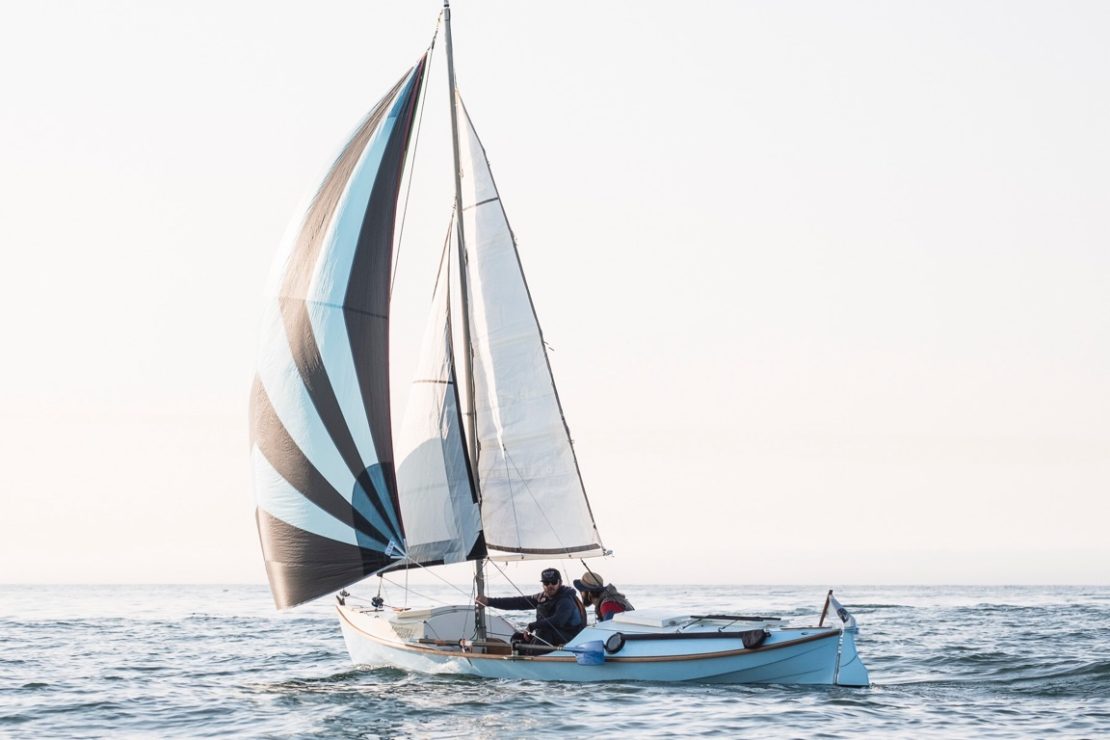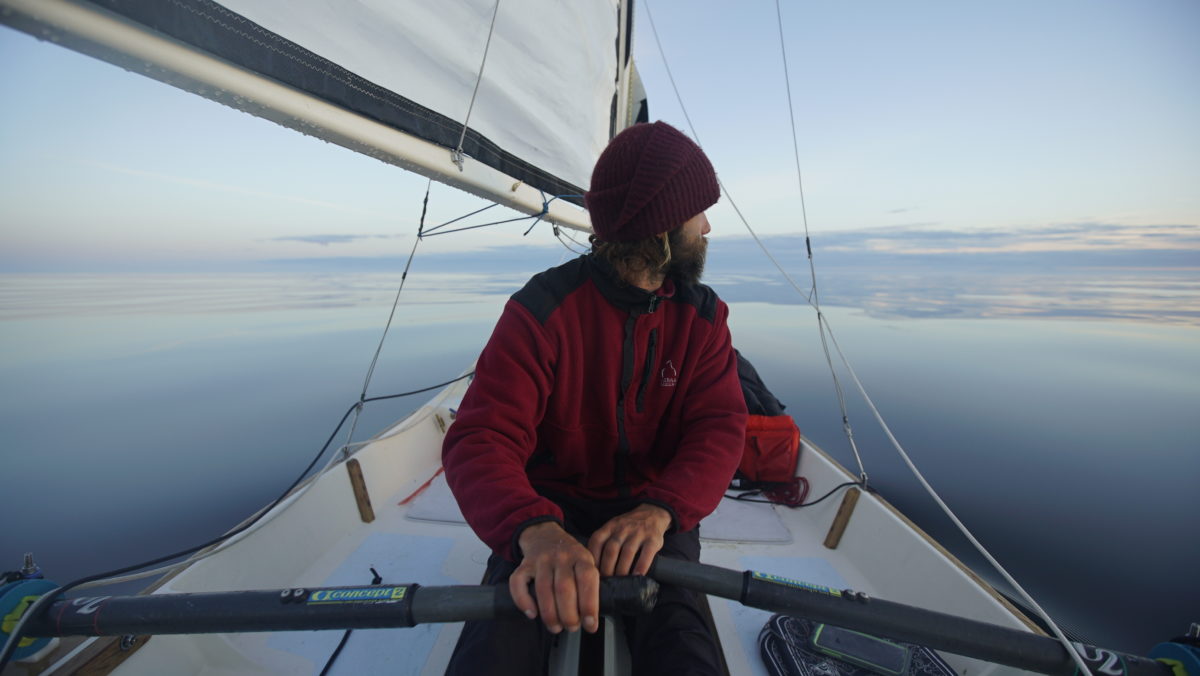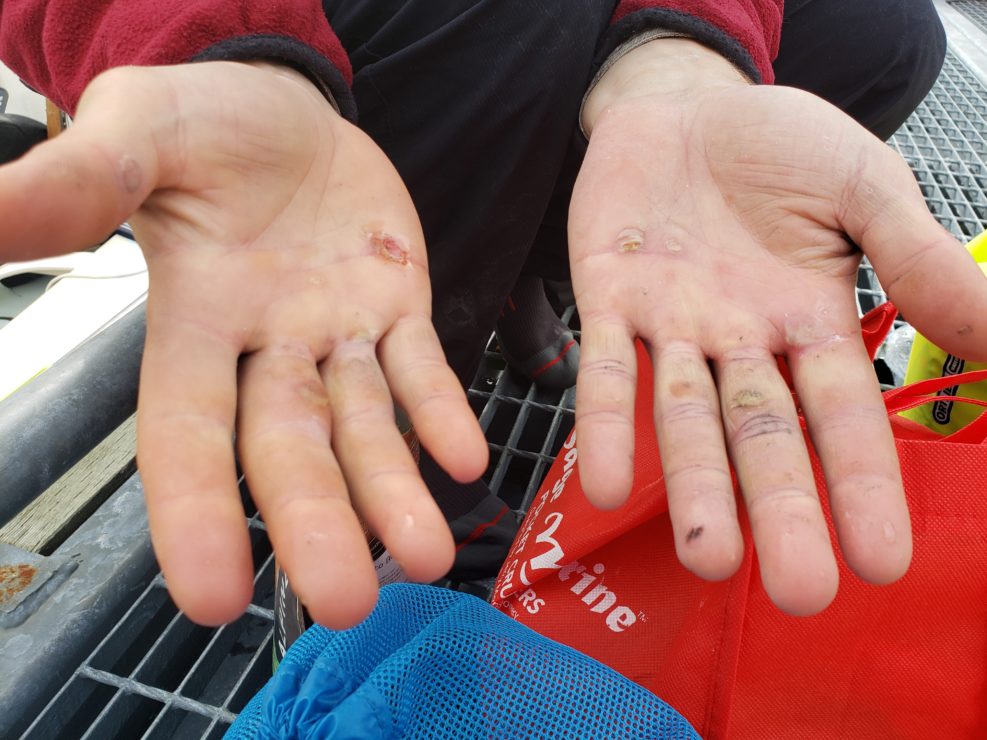An unexpected summer sailing journey, and story of survival, from Washington State to Alaska

If not for the early arrival of a friend’s baby, Trevor Bennett would still only be the documentarian, not the co-captain of a two-man sailing expedition to Alaska.
It started off as a joke, as most memorable adventures always seem to.
Andrew Akehurst was the main instigator of the trip — competing in Race to Alaska (R2AK), a 1 200 kilometre sailing race with no motorized engine allowed, from Port Townsend, WA to Ketchikan, AK — and had a teammate already lined up.
Akehurst recruited Ben Turner, a friend from the Sunshine Coast, to join him on the trip. The duo started fundraising, created a Kickstarter campaign, and got to work building the vessel — a 22-foot sailboat — that would carry them from the northwest tip of the contiguous United States to Alaska.
Akehurst spent a year at the Northwest School of Wooden Boat Building, and planned to use the R2AK as a way to further his knowledge in boat building and navigation.
As Akehurst’s neighbour and award-winning filmmaker and lead editor of the Victoria-based production company Kingtide Films, Bennett began to film Akehurst and Turner before their journey.
Bennett caught on tape the boat building process, which took about four months to complete, and planned to use footage from the race to create a movie of Akehurst and Turner’s adventure north.
“They did a bunch of fundraising, they did a Kickstarter campaign, they built the boat together… They were so excited and really this was their dream coming true,” says Bennett, nearly two months after the R2AK trip, sitting beside Akehurst in the lower loft of his tiny house outside Victoria.
Knowing what’s coming next in the story, Akehurst begins to laugh and lets his teammate carry through the crescendo of the improbable narrative.
“And then Ben and his partner got pregnant, and the baby decided to come early.”
Obviously not wanting to miss a major life milestone, Turner had to back out of the race, which left Akehurst scrambling to find a new teammate a month before the competition.
Akehurst then went through a list of capable sailors and rowers before turning to Bennett, his next door neighbor, who had been teasing Akehurst about joining him on the expedition.
“Jokingly, I was like, ‘oh, I’ll do it,’ but I’ve never really sailed, or rowed, so I kinda signed up for this and had to learn how to sail pretty much on the fly,” said Bennett.
Although Akehurst had been thrown a curveball — and if we continue the baseball metaphor, he summoned Bennett to pinch hit at the last minute — one month later the two were sitting in the sailboat made by Akehurst and Turner outside Port Townsend with nothing but a stretch of 1 200 km of ocean water, currents, and the occasional marine animal ahead.

The R2AK was established in 2015, and has taken place every year since with about a 50 per cent finish rate for its participants.
In 2018, 13 of the 34 teams either didn’t finish or didn’t show up — perhaps second guessing their original decision to enter the race — while 25 of the 50 teams this summer failed to reach the finish line.
It’s North America’s longest human- and wind-powered race, and currently the largest cash prize for a race of its kind. The winner receives a grand prize of $10 000, while second place earns a set of steak knives, and the remaining finishers can boast about simply completing the daunting journey in one piece.
The course record was set back in 2016 with a three-man crew that completed the journey in just under four days, but most teams that finish take up to four weeks or more.
The race is broken down into two stages. Part one is called “The Proving Ground” and sees racers journey 40 miles (64 km) from Port Townsend to Victoria. It’s designed to weed out competitors, and serve as a qualifier for the second stage: “To the Bitter End.”
Following a day and a half break in Victoria, racers trek the final 710 miles (1142 km) to Ketchikan.
There’s no designed route teams need to follow, aside from two checkpoints in Seymour Narrows and Bella Bella, competitors can take any route they want to Alaska. The only rules are that there’s no motorized engine allowed, and you can’t allow for a sweep boat sailed by the race organizers to catch you. After the first team finishes, the boat dubbed ‘The Grim Sweeper’, travels roughly 120 km a day and eliminates any teams it passes.
“It’s a tough race no matter what kind of boat you’re in … I’ve learned a whole lot about seamanship, myself, and about each other.”
Ian Graeme
As the official R2AK website says on its description of the course, “if this sounds like your brand of whiskey, R2AK is the race for you.”
“It’s a tough race no matter what kind of boat you’re in … I’ve learned a whole lot about seamanship, myself, and about each other,” says Ian Graeme, a competitor in the most recent race, who spoke to the Martlet alongside his Victoria-based sailing partner Janice Mason over the phone.
Graeme and Mason have completed the R2AK four and three times respectively. They met prior to the 2016 race and joined forces to finish twice in the past three years together.
They met Bennett and Akehurst briefly before the race this year, and despite falling just short of the cutoff time to stage one, Graeme and Mason tracked their competitors journey toward Ketchikan and were quick to heap praise on the other team’s camaraderie to finish the expedition — knowing the physical and mental demands it takes to simply complete the race.
“At the finish they looked like a really tight team,” says Graeme. “That is a big accomplishment in itself, to put a team together, and endure all the hardships, the pain, the suffering, and the conditions Mother Nature throws at you.”
Some teams fail to finish the race due to interpersonal issues on the water, Graeme and Mason say. They believe the race will be a memory Akehurst and Bennett will remember forever.
“To go through the race in a boat you built, a really small boat, rowing and sailing is a really physical challenge,” said Graeme. “It’s a remarkable accomplishment, and I’m sure it’s going to be life changing. I mean, it has been life changing for us.”
*
I first heard of the R2AK earlier in the summer, and wrote a story in May for the Martlet about an adventurous Seattle-based team who looked to tackle the course.
Over the phone, Chris and Marty Fagan talked to me while on their boat that was travelling through Seattle towards the start line in Port Townsend. The extreme couple had climbed over 20 000 feet to the summit of Denali in Alaska, received a Guinness World Record for a self-guided ski crossing of Antarctica, and completed multiple 100 mile races.
Before their R2AK expedition, they talked about their excitement racing in a Hawaiian canoe and believed if the winds were right they’d have an outside shot of winning the race.
A couple weeks later, less than 70 km from the finish line, the Fagans had to be rescued by the Canadian Coast Guard.

It’s an overcast day, an unusually spring-like afternoon in Victoria in the middle of August. I watch the morning rainfall drip off the neighboring oak trees, and can already see the clouds parting way for the sunshine.
It’s 15 minutes before I’m scheduled to meet Akehurst when I see him sitting neatly on a stool in his wooden shed in the vast backyard.
I can see a smile form under his bushy, brown beard, and he shakes my hand before guiding me into the loft of his tiny house. As we enter, almost on cue, Bennett emerges from his neighboring home into Akehurst’s backyard and takes a familiar position beside Akehurst in the loft.
They were casual friends before the trip, but developed a unique friendship on the sea during the race. The duo spent over 20 days on their boat, slept on it, had two all nighters paddling, and navigated waves and currents of the Pacific Ocean on their homemade raft.
“Trevor lives in the basement,” says Akehurst while sharing a laugh with Bennett at the table in the loft. “We were like buddies, hanging out every once in awhile, but [our friendship] went from like zero to hero for sure.”
Bennett has completed other adventurous feats — including biking with ski equipment up to the top of Hurricane Ridge, and skiing the mountain in the Olympic National Park in Washington State. Akehurst had past experience sailing, but the duo both had to learn how to navigate the changing currents and weather while on the course.
“It’s kind of like being a passenger of a car versus being a driver of a car, when you’re at the steering wheel you can feel the boundaries of what the boat can do and can’t do and you have control of it,” says Bennett.
The team practiced in water twice before the race, rowing once in the Gorge and sailing to the start line a few days before the start of the race in Port Townsend.
When they reached the startline of the race, Akehurst and Bennett soon realized their expectations would be thrown out the window.
Before he took part in the race himself, Bennett filmed a Kickstarter campaign video that helped raise over $14 000 for Akehurst and Turner to build their sailboat. The original partners planned on using the boat building and sailing experience to open a Community Boat Building shop in Victoria, and were going to try and be competitive to win the $10 000 grand prize to fund the store.
When Turner had to pull out, however, the team of Akehurst and Bennett quickly realized the race would be about survival.
“Starting the race was really exciting, but daunting because there was lots of seemingly professional teams around and it was a big, super windy day,” says Akehurst. “There’s like 50 boats starting out at five in the morning, and I think we both felt we were in a bit over our heads.”
Highlighted by the fact they raced in a 22-foot boat, compared to larger professional yachts, Bennett says the team was essentially on the water riding a canoe with a mast.
“This boat was tiny, a 22.5-foot boat is like a canoe with a mast … so we’re in a group of six small boats … and for the small boats it’s a totally different, really crazy undertaking,” says Bennett before letting out a deep breath of air. “It was a heavy trip.”

When asked what the hardest night on the trip was, Akehurst says a particularly windy day at the top of Vancouver Island when they were crossing the Queen Charlotte Strait comes to mind. Combined with a lack of sleep, a lot of soreness, and travelling for 10 days at that point, they managed to find a safe spot on a nearby island and passed out on a pair of rocks for an entire afternoon.
Bennett, meanwhile, said learning how to navigate a sailing boat for the first time — with the ever changing winds and currents — was a difficult challenge in itself.
“When I finally did [learn how to control the boat] I was able to manage my anxiety and fear, because it was scary, it was full-on,” he said. “We had some scary times … it was 20 days, and almost every day, we ran into something crazy. We were really far away from shore and the waves and wind can pick up super fast. There was no day that was like ‘oh, today is going to be totally predictable.’”
“And where you get where you want to go, and there’s no weird challenge in the middle that freaks you out,” Akehurst says, finishing off his teammate’s sentence.
Akehurst and Bennett said they had cell service until the top of Vancouver Island, and outside of service they used radios to hear signals inland to help predict the winds and currents, but sometimes found the weather on the water varied from what they read on their phones. They were fueled by a lot of trail mix, meat sticks, and pre-packaged meals.
When the teammates finally had Ketchikan in their sights, 23 days after they began in Port Townsend, they had another decision to make: paddle through the night, arrive at three in the morning and finally enjoy good food and beer, or wait another evening and hit land later in the morning.
Unsure if the bars were going to be open, or if there would be anyone at the finish line to see them cross, Akehurst and Bennett stopped with 10 km to go in the race. The next day, Akehurst and Bennett reached Ketchikan at just after seven in the morning — capping off an emotional, roller-coaster adventure with a 25th place finish out of 50 teams.
“We knew we were going to get there in the morning, so there was a relief and happiness that night that we got to share with each other. And when once we finished, for me, it was overwhelming … we’d been alone for so long … in the moment of finishing it was surreal,” says Akehurst.
“It was really emotional, too, we just travelled so far in this tiny boat,” adds Bennett, before Akehurst topped off his thoughts on the journey. “It felt very significant, and then at the end it was kind of like, what just happened?”
Over 20 days at sea will do that to you.








